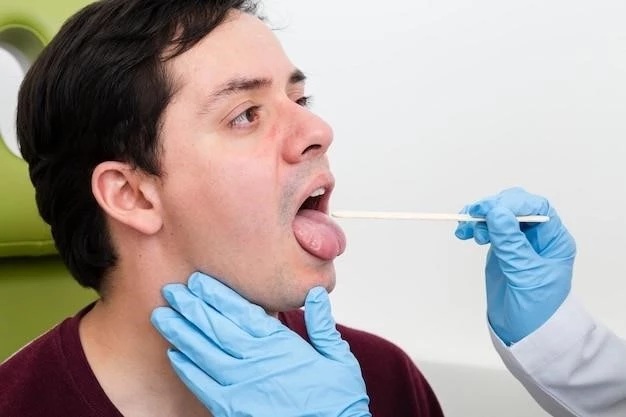Introduction to Tongue Neoplasm
A type of head and neck cancer. Tongue neoplasms often present as squamous cell carcinoma.
Tongue neoplasm‚ specifically squamous cell carcinoma‚ is a type of head and neck cancer characterized by abnormal cell growth in the tongue. Early symptoms may include persistent spots or lumps‚ which could indicate the presence of this malignancy.
Causes and Risk Factors
Main risk factors for tongue neoplasm are smoking‚ heavy alcohol consumption‚ and human papillomavirus (HPV) infection.
Smoking and Alcohol Consumption
The main risk factors for tongue neoplasm include smoking and heavy alcohol consumption‚ which can significantly increase the likelihood of developing this type of cancer.
Human Papillomavirus (HPV) Infection
Infection with the human papillomavirus (HPV) is a significant risk factor for the development of tongue neoplasms‚ particularly squamous cell carcinoma.
Definition and Overview
Tongue neoplasm‚ specifically squamous cell carcinoma‚ is a type of head and neck cancer involving abnormal cell growth.
Persistent Spot or Lump on the Tongue
A prominent symptom of tongue neoplasm is the presence of a persistent spot or lump on the tongue that does not resolve over time.
Bleeding or Painful Ulcers
Bleeding or painful ulcers in the tongue can be indicative of tongue neoplasms‚ particularly squamous cell carcinoma. These symptoms should not be ignored and may require further evaluation by a healthcare professional.
Diagnosis and Staging
Diagnosis of tongue neoplasm involves biopsy and imaging tests to confirm the presence of abnormal cells in the tongue. Staging is crucial for determining the extent of the cancer’s spread.
Biopsy and Imaging Tests
To diagnose tongue neoplasm‚ healthcare providers commonly perform biopsies to analyze tissue samples for cancerous cells. Imaging tests like MRI or CT scans can help determine the extent of the cancer’s spread.
The TNM staging system‚ which stands for Tumor‚ Node‚ and Metastasis‚ is utilized to stage tongue neoplasms effectively. This system helps determine the extent of the primary tumor‚ lymph node involvement‚ and distant metastasis.
Treatment Options
Treatment for tongue neoplasm may involve surgical intervention‚ radiation therapy‚ and chemotherapy‚ depending on the stage and extent of the cancer.
TNM Staging System
The TNM staging system plays a crucial role in determining the stage of tongue neoplasms. This system evaluates the tumor size‚ lymph node involvement‚ and the presence of metastasis to guide appropriate treatment strategies.
Radiation Therapy
Radiation therapy is a common treatment option for tongue neoplasms‚ especially in cases of advanced disease. It is utilized to target and kill cancer cells in the tongue while minimizing damage to surrounding healthy tissues.
Chemotherapy
Chemotherapy is a common treatment modality for tongue neoplasms‚ often used in combination with surgery or radiation therapy. It helps target cancer cells that may have spread beyond the primary site in the tongue.
Prognosis and Survival Rates
Tongue neoplasm can have varying prognoses depending on the stage‚ with five-year relative survival rates ranging from approximately 69% to 83% based on the extent of the cancer.
Five-Year Relative Survival Rate
The five-year relative survival rate for tongue neoplasm varies based on the stage of the cancer. When localized‚ the survival rate is approximately 83%‚ whereas regional spread reduces it to around 69%.
Factors Affecting Prognosis
Several factors can impact the prognosis of tongue neoplasm‚ including the cancer’s stage at diagnosis‚ the presence of metastasis‚ the patient’s overall health‚ and the effectiveness of the chosen treatment approach.
Prevention Strategies
Preventive measures for tongue neoplasm include maintaining good oral hygiene practices and avoiding risky behaviors that can contribute to its development.
Importance of Oral Hygiene
Maintaining optimal oral hygiene is essential in preventing tongue neoplasms. Regular dental check-ups‚ proper brushing‚ and flossing can help reduce the risk of developing oral cancers‚ including those affecting the tongue.
Avoiding Risky Behaviors
Avoiding risky behaviors such as smoking‚ heavy alcohol consumption‚ and exposure to HPV can significantly reduce the risk of developing tongue neoplasms. Lifestyle modifications play a crucial role in prevention.

Ongoing Research and Innovations
Recent research focuses on improving treatments for tongue carcinoma‚ with surgical interventions and radiation playing crucial roles in managing advanced cases.
Cancer Vaccines and Immunotherapy
Ongoing research focuses on the development of cancer vaccines and immunotherapy for tongue neoplasms. These innovative treatments aim to stimulate the body’s immune system to target and destroy cancer cells in the tongue.
Exosome Therapy for Tongue Neoplasms
Recent developments in medical research explore the potential of exosome therapy for tongue neoplasms. Exosomes derived from γδ-T cells demonstrate anti-tumor effects‚ presenting a promising avenue for innovative cancer treatment.

Personal Stories and Awareness
Exploring personal journeys of individuals affected by tongue neoplasms can raise awareness and provide insight into the challenges faced. Support groups play a vital role in offering comfort and guidance for patients navigating this condition.
Celebrity Cases of Tongue Neoplasms
Exploring notable celebrity cases of tongue neoplasms can raise awareness about the disease and the importance of early detection and treatment. These stories can inspire individuals to prioritize their oral health and seek medical attention promptly.
Patient Journeys and Support Groups
Sharing patient experiences and participating in support groups can offer emotional support and valuable insight to individuals diagnosed with tongue neoplasms. These personal stories help in fostering awareness and creating a sense of community among those affected by the condition.
Conclusion
In conclusion‚ tongue neoplasm‚ particularly squamous cell carcinoma‚ poses a significant health concern that requires timely diagnosis and appropriate treatment. Emphasizing prevention strategies‚ early detection‚ and advancement in treatment options are pivotal in improving outcomes for individuals affected by this condition.
